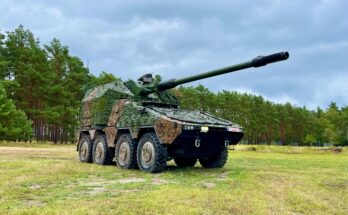
Original SLQ-25(V) NIXIE. Image – US Navy
The U.S. Navy’s Surface Ship Torpedo Defense (SSTD) program provides a detect-to-engage layered torpedo defense capability. The four major systems that comprise the U.S. SSTD are the SLQ-25 NIXIE system, the Torpedo Warning System (TWS), the Countermeasure Anti-Torpedo (CAT), and the Acoustic Device Countermeasure (Surface ADC Mk 2). CAT and TWS are development programs.
The CAT program develops a canisterized anti-torpedo torpedo (ATT).
The TWS program develops the torpedo detection, classification and localization systems required to employ CAT.
Together, the TWS and CAT systems make up the Anti-Torpedo Torpedo Defense System (ATTDS).
The U.S. Navy halted development of the ATTDS portion of the SSTD around September 2019 due to poor performance and removed the prototypes from its aircraft carriers. Apparently, while the system did work in principle, it was not considered reliable enough for operational use.
The SLQ-25 NIXIE is a towed acoustic and non-acoustic countermeasure system. The SLQ-25 program develops countermeasure technologies and capabilities to improve ship survivability against future torpedo threats. The system has undergone several commercial-off-the-shelf (COTS)-based enhancements with all existing SLQ-25(V)s now being upgraded to the latest SLQ-25E variant.
Additionally, this NIXIE technology was used as a foundation to build the SLQ-61 Lightweight Tow (LWT) Torpedo Defense Mission Module (TDMM) for the Littoral Combat Ship as well as other small combat vessels such as the Constellation class frigates.
With the submarine threat increasing each day, the U.S. Navy is likely to forge ahead with SSTD development even if it has to revamp the entire original system concept. Perhaps the U.S. Navy will follow the routine of several of the world’s other leading navies and focus more heavily on expendable decoys and anti-torpedo torpedoes.
For more than 30 years, Richard has performed numerous roles as a top analyst for Forecast International. Currently, Richard is the Group Leader and Lead Analyst for Forecast International's Traditional Defense Systems, which covers all aspects of naval warfare, military vehicles, ordnance and munitions, missiles, and unmanned vehicles.
Having previously been Forecast International's Electronics Group Leader for 20-plus years, Richard established Electro-Optical Systems Forecast, as well as having been the prime editor of Electronic Systems Forecast, Land & Sea-Based Electronics Forecast, and C4I Forecast. Additionally, Richard has served as the Naval Systems Group Leader responsible for Anti-Submarine Warfare Forecast andWarships Forecast.




